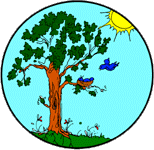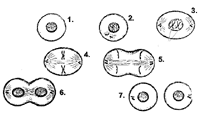|
|
1. Which of the following organisms can be found in pond
water?
2. Which of the following organisms is the cause of molds?
3. Which body system is responsible for producing hormones?
4. How many pairs of chromosome do humans have?
6. Which of the following can't be killed by antibiotics?
7. Which of the following is not a type of bacterium?
8. Which of the following cannot reproduce on its own?
9. Which of the following represents a dominant, homozygous trait?
10. Circle the pH of distilled water, a neutral substance.
11. What would you guess would be the pH of a strong acid?
12. Which of the following substances is a plant hormone?
13. The science that deals with the study of inheritance is called:
14. Which of the following soils has a pH greater than 7?
ANSWERS: 1.(D); 2.(C); 3.(D); 4.(C); 5.(B); 6.(A); 7.(D); 8.(A); 9.(A); 10.(D); 11.(A); 12.(C); 13.(C); 14.(A); |

 Life
Cycle
Life
Cycle 5. The following figure illustrates:
5. The following figure illustrates: